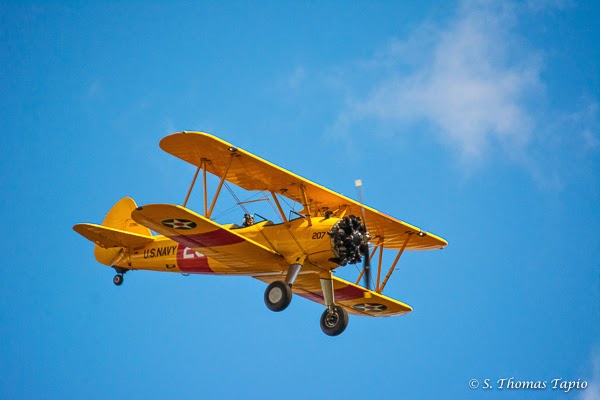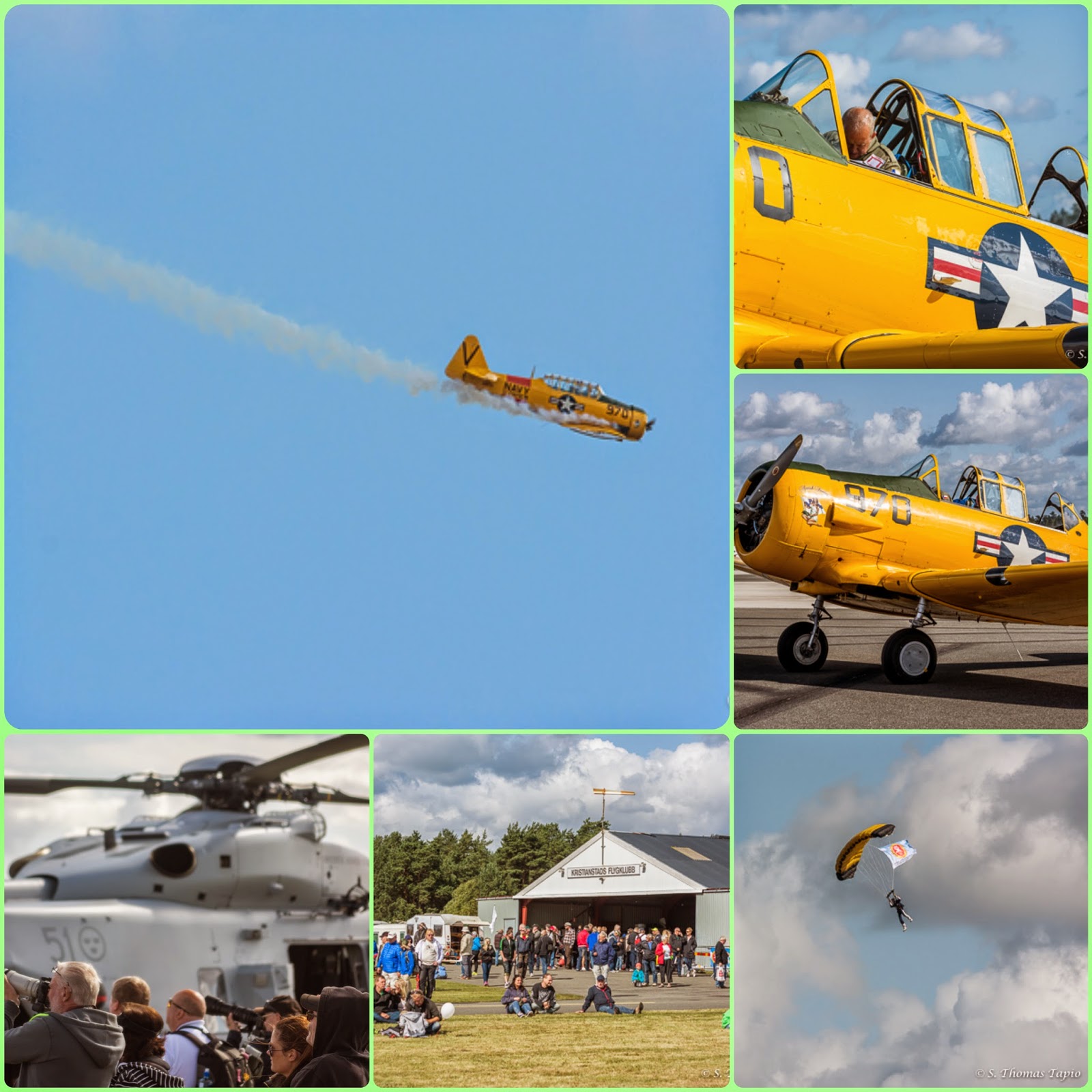Air Show at
KRISTIANSTAD ÖSTERLEN AIRPORT
 |
| Boeing Stearman Primary trainer in US, used later a Pratt &Whitney engine. |
When Mr. T Jr. made a point that a visit to an air show would be interesting I was not sure what to expect as I had not been to one before. The Kristianstad air show gave me an opportunity to fill in this gap and I got there early enough before the airborne part of the show started. At the end of the day I was excited about the event that offered a sky full of different planes each with their slot for presenting their machines, pilots and flight programs. The highlights were when Spitfire and Hawker Hurricane shared the same air space in Sweden for the first time and when the Hawker Hurricane was introduced in Finnish retro colors to commemorate the Finnish Winter War and flew with Sibelius sounding from the ground speakers. WHAT A FANTASTIC MOMENT! The other highlight came at the end when Jas 39 GRIPEN entered and performed a stunning program of its own flying low. How these pilots master a fast flying plane like this is fantastic.
 |
| Hawker Hurricane and Spitfire helped win the Battle of Britain in the 2nd World War. |
 |
| Hawker Hurricane performing. Not many of them left anymore. |
 |
| Spitfire airborne and on the ground. Every pilots dream to fly this machine. |
The slots given to each flying machine was 30 minutes and once one program was finished another started so there was not a dull moment during the whole day. But a personal slot for "pölsemannen" or a sausage was necessary. Also parachuters had their own slot and these "dare devils" landed just in front of us. They came down very fast but where able to hold up only seconds before landing. Another interesting thing was the model airplanes that indeed are no toys but rather large flying machines that can get up to very high speeds and perform similar aerobatics in the air as their big brothers.
Another interesting airplane was the US built Pitts Special originally design by Curtis Pitts in the 40´s as an aerobatic biplane. This single-seated machine still competes successfully. It has a 200 hp flat-4 Lycoming engine but some versions carry a 450 hp machine (Wikipedia).
 |
| Pitts Special - a beautiful machine with a short wingspan perform stunningly. |
 |
| Pitts Special in its aerobatic performance over Kristianstad Österlen airport. |
Another interesting flying machine is the Boeing-Stearman, another bi-plane used for military practicing since 1930's. After the second World War many were sold to civilians as crop dusters, sports planes and for wing-walking and aerobatic use in air shows (Wikipedia). A popular modification has been installing a Pratt & Whitney R-985 engine to improve take off and climb performances.
 |
| Boeing-Stearman. |
And yet another World War II "veteran", the North American T-6 Texan (below) a single engined trainer aircraft for USAAF and the US Navy as well as the Royal Air Force until the 70's but also used in combat use by many countries (Wikipedia). Lately this aircraft has been used in air shows and movies like "Tora ToraTora", "The Final Countdown" and "A Bridge Too Far".
 |
| T-6 Texan performing. |
 |
| Crowds watching the show and parachuters dropping down in high speed. |
Finally a series of the Soviet built Yakovlev Yak-55, a single seated aerobatic aircraft that has won many championships - the first in 1984 by the Russian aerobatic team. It has a 360 hp Vedeneyev M14P engine driving a two-bladed propeller (Wikipedia).
 |
| Yak 55 |
 |
| Two Yak's competing each other in aerobatics with Per Norén coming out as the winner. |
Other flying machines appearing at the show includes e.g. a Laser, two helicopters and a glider that was self propellered needing no pulling help. The "Seawind" below did not fly.
 |
| Participants in the Kristianstad Air Show. |
The second highlight of the Air Show came last; Jas 39 GRIPEN appeared from the skies with a roar that kept everything else silent. This modern fourth generation multirole fighter aircraft is designed for fighter, attack and reconnaissance missions. It serves in the Swedish Air Force and in some other countries, too. It is powered by Volvo engines and reaches a top speed of Mach 2, or 2448 km/h in a temperature of +15 degrees.
 |
| Jas 39 GRIPEN |
This fantastic day was over very quickly and it remains only to extend an appreciation to the organizers Kristianstads Flygklubb (Aeroclub) for an event not easily forgotten. Much appreciation also to the speaker on the ground that kept us all very well informed of what was going on and also knew to explain correctly the retro colors of the Finnish Hawker Hurricane.
Have a nice up-coming weekend everyone.
:-)
































